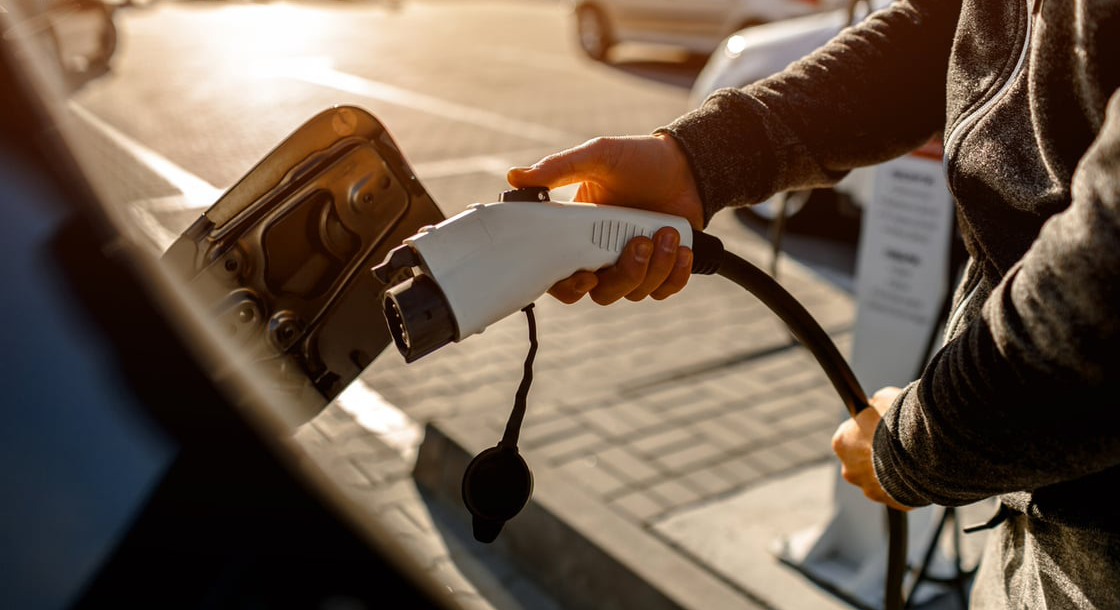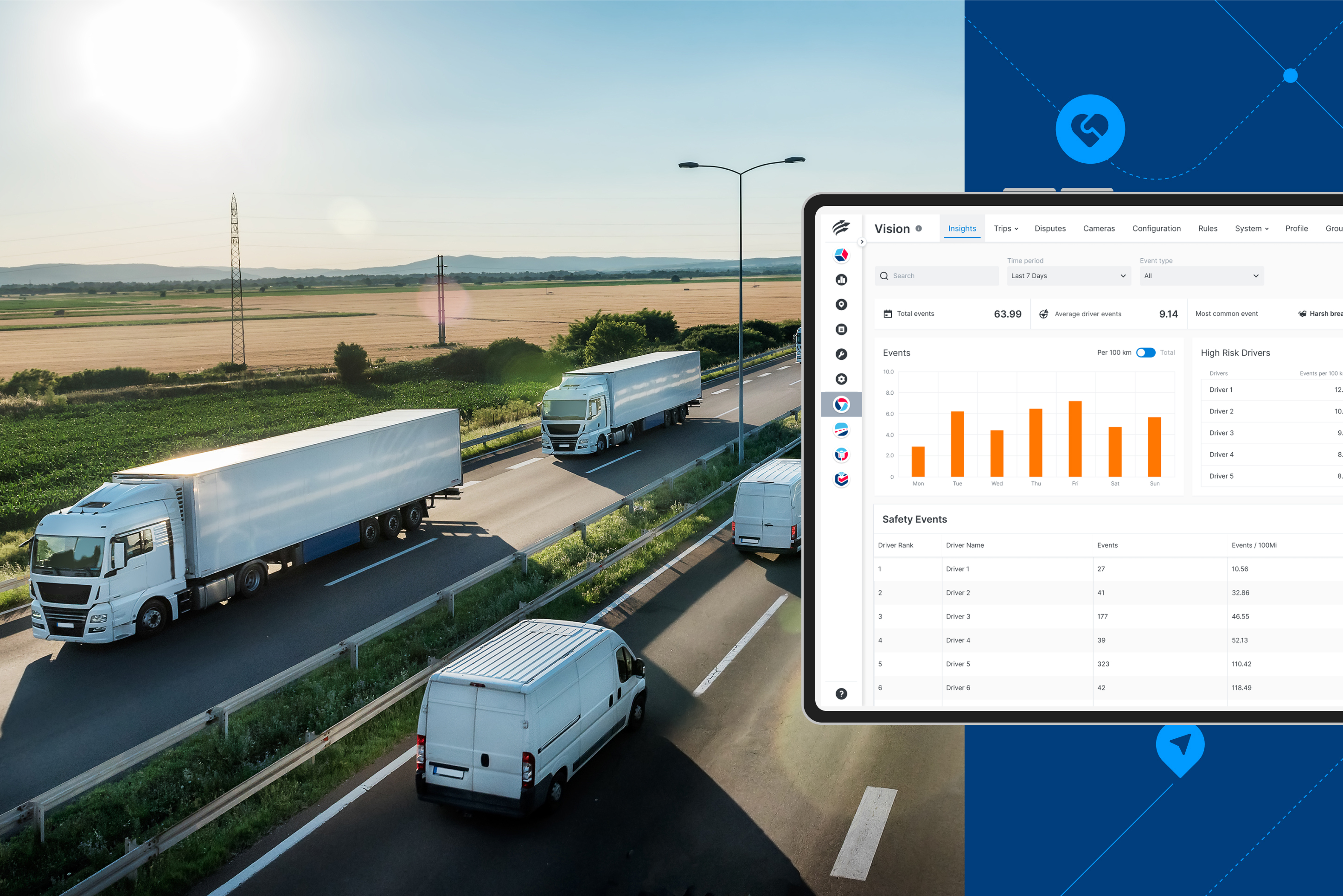Telematics is no longer just GPS tracking and vehicle routing. With an increasing number of tools available to fleet managers, how do they choose the best-fitting program and provider, and ensure their company achieves a return on investment (ROI)?
Building a solid business case for telematics and proving a sustained ROI is arguably the biggest hurdle that’s preventing the more widespread use of telematics among fleet companies. Given that it’s a technology that’s been around for quite some time, one would think that almost all fleets are using it. However, according to a 2018 Automotive-Fleet.com survey, only 30-40% of fleets were using telematics at the time.
Even the simplest form of telematics, GPS tracking, has still not achieved 100% utilization among fleets. Recent data reveals that only 64% of all fleets were using GPS as of 2019.
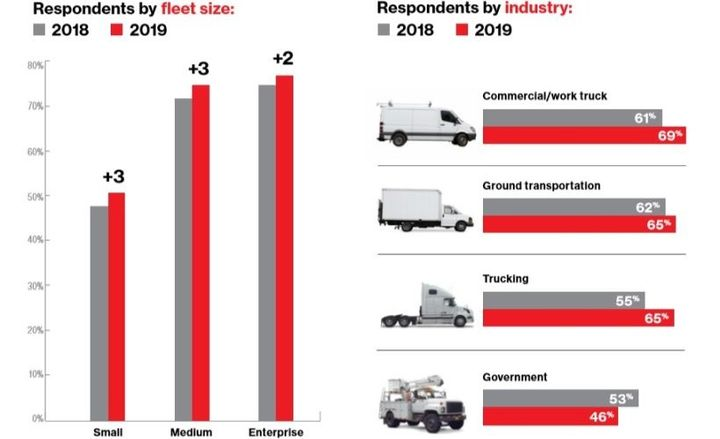
GPS tracking, the most basic type of telematics, has still not achieved 100% utilization among fleets (Image Source).
Fleets that are not using telematics are missing out on opportunities to reduce costs, make their operations more efficient, and generate more profit. Fleet managers need to present a solid business case for telematics that show tangible and measurable ROI.
If your fleet is still not using telematics to its full potential, here are 4 crucial steps to enable you to demonstrate telematics ROI to your leadership.
1. Debunk Telematics Misconceptions
The first thing you need to address is any resistance against telematics implementation. Based on feedback from fleet managers, there are 3 major underlying reasons behind this:
- Drivers feel “Big Brother” is watching them
- Fleets/companies feel telematics are not necessary given the way they’re using their vehicles
- Telematics is costly
There may be other executives or drivers that give reasons against using telematics, but it will probably fall within the 3 categories above. Here are suggestions on how you can address each concern:
- “I don’t like the feeling of being watched” — Privacy will always be a point of contention when rolling out employee monitoring initiatives. The best way to allay this fear is through proper education. Explain to your drivers what data you’re going to collect, how you’re going to collect it, and the purpose behind it.
- “We don’t need telematics” — The reality is, if your company is operating a fleet of vehicles, telematics can definitely help in making the operation of these vehicles more cost-efficient. The benefits of fleet management through telematics software have been documented again and again.
- “Telematics is expensive” — The cost of telematics has gone down significantly in the past few years with the proliferation of providers and available technologies. However, this concern is valid if it will be implemented on hundreds of vehicles. This is where the cost-saving benefits of telematics will come in (more about this later).
2. Match the Telematics System to Your Goals
As fleet manager, you’re the best person to know what inefficiencies and unnecessary expenses telematics can address. As with any other technology investment, the best and the greatest isn’t necessarily what you need. You have to match the features of the system you’re going to use with the goals of your telematics implementation.
However, keep in mind that cheaper doesn’t mean better. A fleet management software can help your company reduce fuel consumption by tracking how your vehicles are being used by drivers. For example, businesses can monitor if drivers are moving too slow, too fast, or idling unnecessarily during trips. This way, you’ll save in fuel costs by being able to identify where it is wasted without need.
3. Highlight the Benefits of Telematics
According to Bobit Business Media president Sherb Brown, “The most common objection we see now to adopting a telematics system is cost. It’s a legitimate concern for most fleets. Buying 1,000 or 10,000 of anything is expensive. But you don’t need to twist the numbers to convey that tracking your fleet is one of the best investments you can make. The payoff for most is close to immediate. And I have yet to talk with a fleet that regrets implementing a telematics program.”
Brown further argues that the benefits of telematics outweigh the cost so much that doing a cost-benefit analysis is almost unnecessary.
This is where building a business case for telematics comes in. For this, you can use industry data to demonstrate the potential benefits telematics can deliver to your fleet. For instance, a FleetAnswers survey revealed the key benefits fleets were able to achieve after implementing telematics. Ranking among the top responses are improved driver behavior, increased fuel savings, improved driver safety, reduced emissions, shorter delivery times, and reduced maintenance costs. All these contribute to higher profits and lower operating expenses.
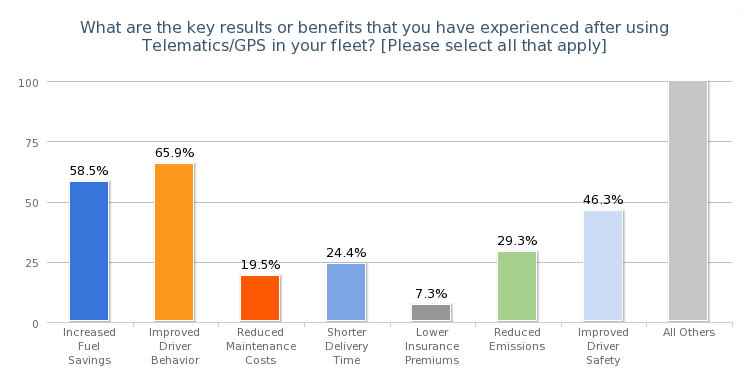 The immediate and long-term benefits of telematics far outweigh the initial cost of investment (Image Source).
The immediate and long-term benefits of telematics far outweigh the initial cost of investment (Image Source).
Here’s a tip: To lessen the shock of the initial cost to roll out telematics for your fleet, start with a pilot program involving a few vehicles. Do some initial data gathering and report the generated ROI to your leadership.
4. Create an ROI Measurement Plan
Speaking of data, the quality of your data collection methods and the data itself will determine how well you’re able to measure the ROI of telematics for your business. Challenges may include data consistency, data quality, data complexity and relevance.
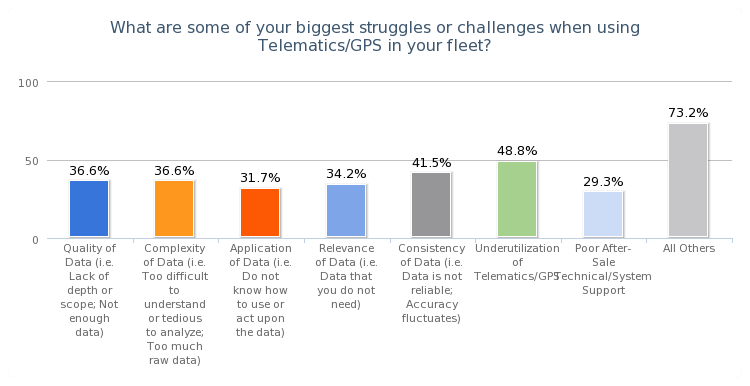
Fleet managers are having difficulty proving the ROI of telematics due to a number of data issues (Image Source).
Due diligence in selecting a telematics provider is important to prevent these issues. Don’t shy away from raising questions on accuracy, relevance, usefulness, and complexity. An ideal telematics partner should be able to guide you in creating an ROI measurement plan and how to relate the data culled from their telematics products to your business objectives.
Telematics: A No-Risk Investment
Considering the benefits of telematics on fuel economy, compliance, driver safety, vehicle maintenance, and operational efficiency, telematics should generate an almost immediate ROI. Even so, you might have an issue convincing your leadership to implement telematics for your fleet, addressing challenges, and finding a telematics solution that fits your needs. If so, highlighting industry benchmarks and creating an ROI tracking plan should make this easier.
If you’re exploring a telematics partner that is sensitive to your business needs and objectives, reach out to our team at Powerfleet (formerly Fleet Complete). We can collaborate on how our telematics solution can help you generate the fastest and highest ROI.









